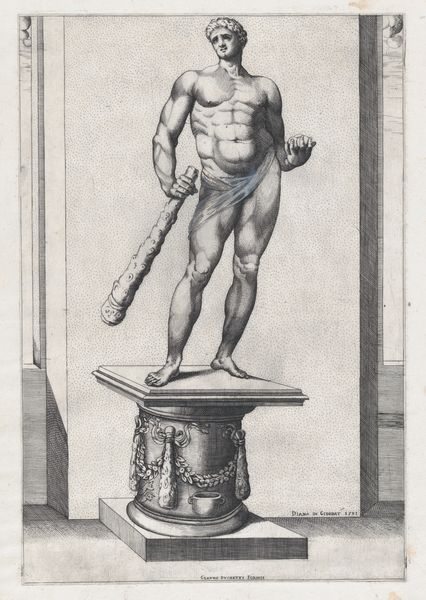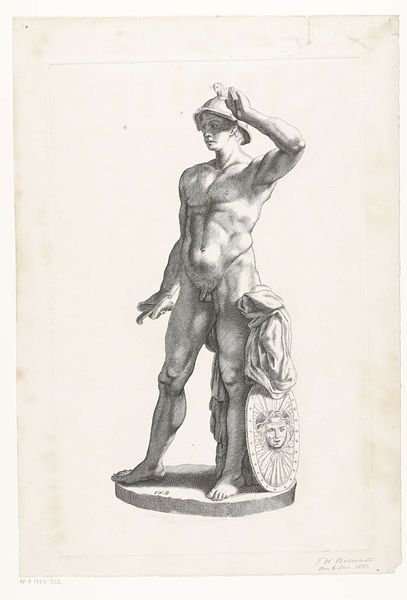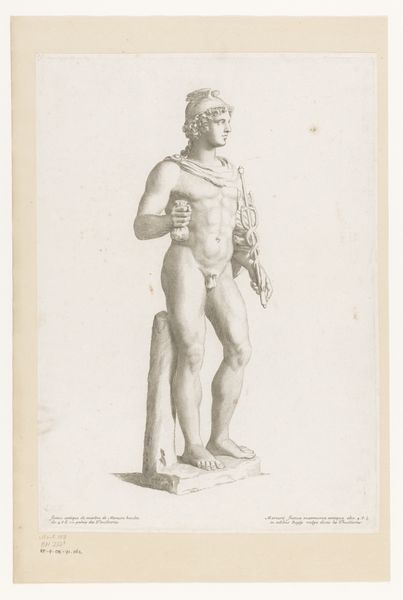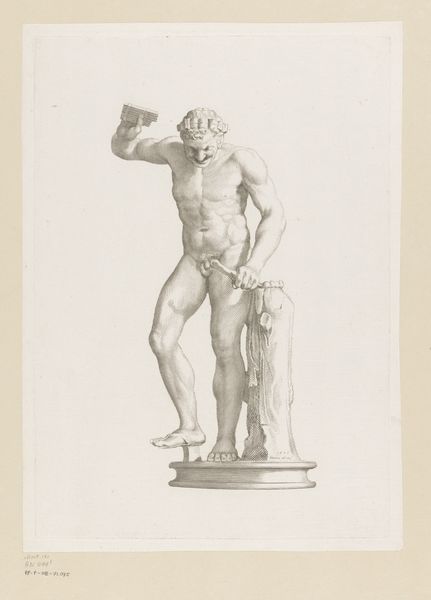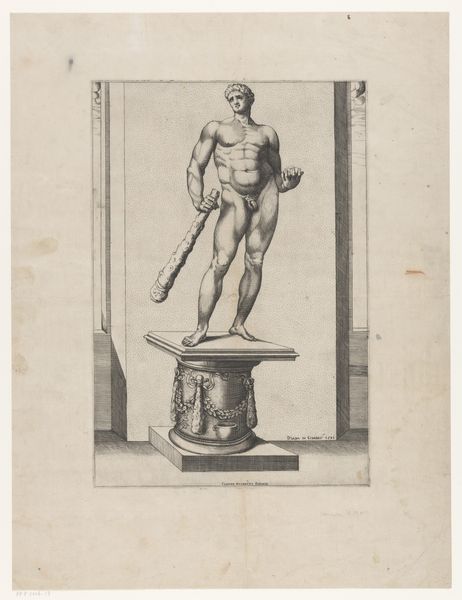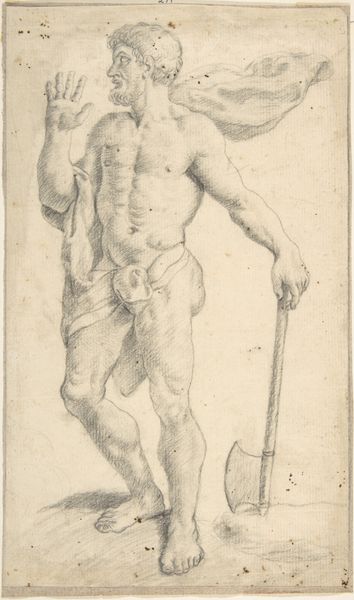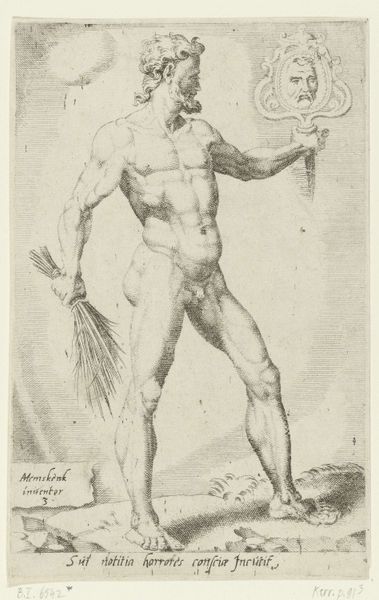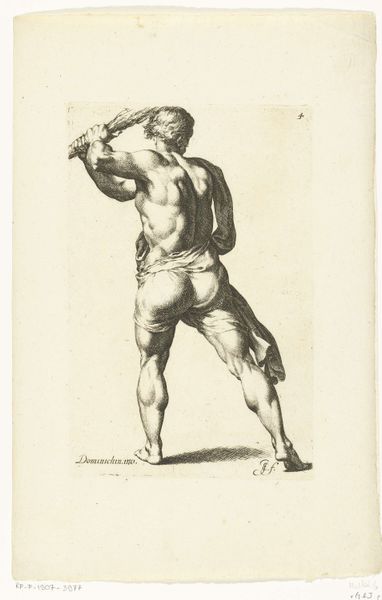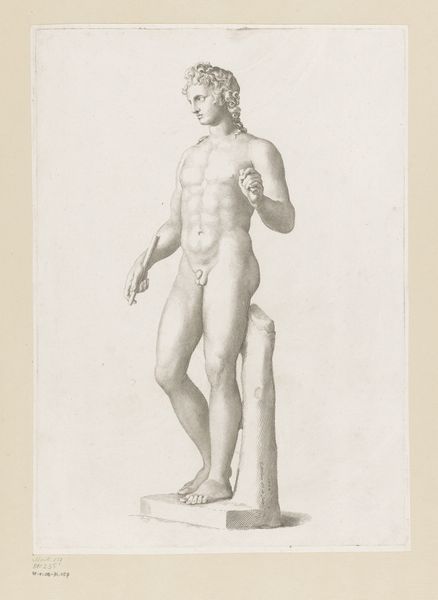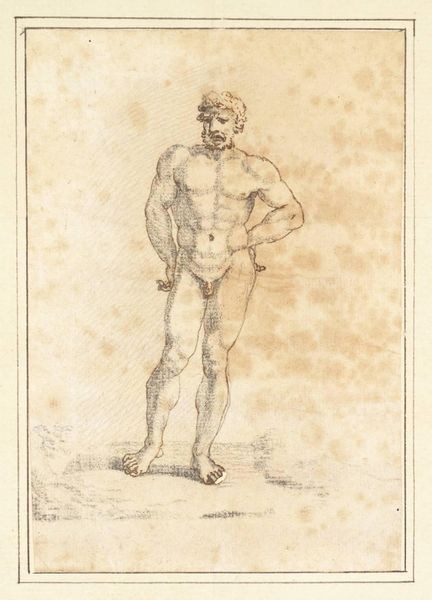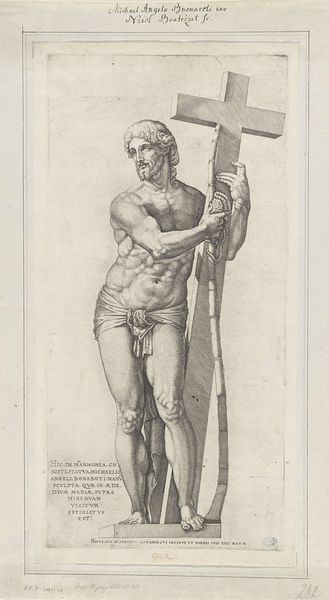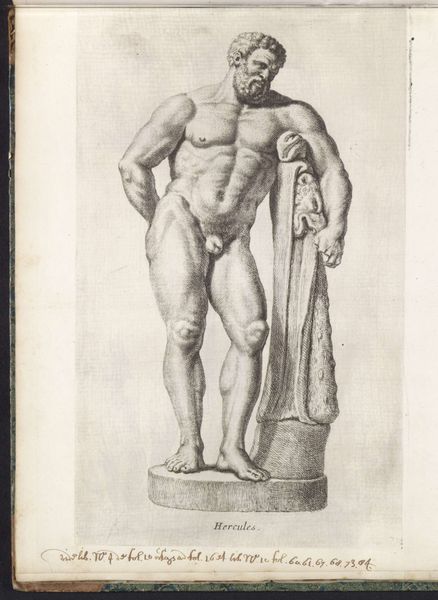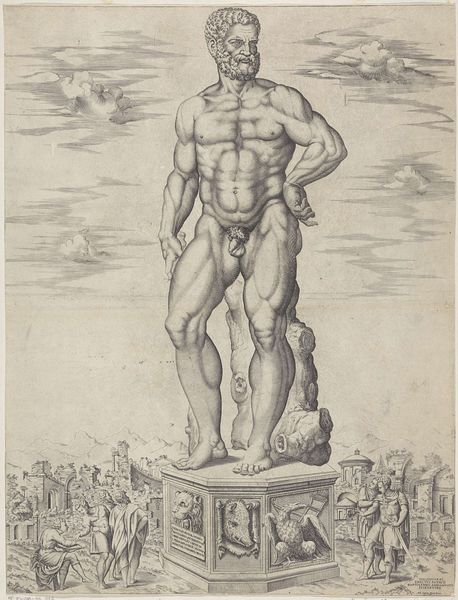
print, metal, sculpture, engraving
#
portrait
#
baroque
# print
#
metal
#
greek-and-roman-art
#
classical-realism
#
figuration
#
sculpture
#
history-painting
#
engraving
Dimensions: height 315 mm, width 210 mm
Copyright: Rijks Museum: Open Domain
Cornelis Bloemaert made this print of Hercules Capitolinus in the 17th century using the technique of engraving. Engraving is an intaglio process, meaning that the image is incised into a metal plate, in this case probably copper. The artist would have used a tool called a burin to manually carve lines into the plate’s surface. Ink is then applied to the entire plate and subsequently wiped off, leaving ink only in the carved lines. The plate is then pressed onto paper, transferring the image. The precision and detail seen here speak to the skill required to execute such a print. Think of the control needed to create the fine lines that define Hercules’ muscular form. The process is labor-intensive, demanding patience and expertise. Prints like this one played a crucial role in disseminating images and ideas in early modern Europe. By understanding the labor and skill involved, we gain a deeper appreciation for the print not just as a reproduction, but as a handcrafted object in its own right.
Comments
No comments
Be the first to comment and join the conversation on the ultimate creative platform.
